Two years ago I visited Kagga Kamma, one of South Africa’s nature reserve, and since then I have been itching to get back and do a full on Safari and what better excuse now that I own the Fuji X-H1, whose ergonomics is specifically geared towards action/wild life photography.
(Before I begin this blog, please note I am not a professional wildlife photographer, rather regard this as a fashion and portrait photographers attempt at a different photography genre, hoping they can cut the mustard, fingers crossed 🙂
First off the conditions are very different from what I’m use to in fashion and portraiture. Here in Pilanesberg National Park, I don’t get to control the light, location or subject. Much is reliant on perseverance, patience and luck. As I’m generally use to setting the scene, controlling the light, positioning the subject etc this was a completely different realm for me:
For five days straight I was up at 5am, sometimes sitting in sub zero temperatures for hours, waiting for just a glimpse, though always with a hot water bottle. Many times I would spot wildlife hidden amongst the foliage yet, still, every sighting left me excited and wanting more, even if I didn’t always get the shot.
Those who know me and work with me, know that I am often losing my lens cap, chatting away and generally being exuberant on shoots. However, on Safari, this is a no no, you always need to be calm, yet alter, especially if you are in close proximity to a Lion….

ISO 4000 280 mm ƒ/6.4 1/20sec Our evening game drive was held up due to this Lion deciding to take a nap in the middle of the road.
Due to it being the winter season the weather was mainly overcast, so less inspiring in regards to light. Still, I managed to make the best of the overcast days:

ISO 6400 160.8 mm ƒ/5.6 1/280sec There’s something melancholy about seeing these two guy’s taking a stroll into the overcast horizon
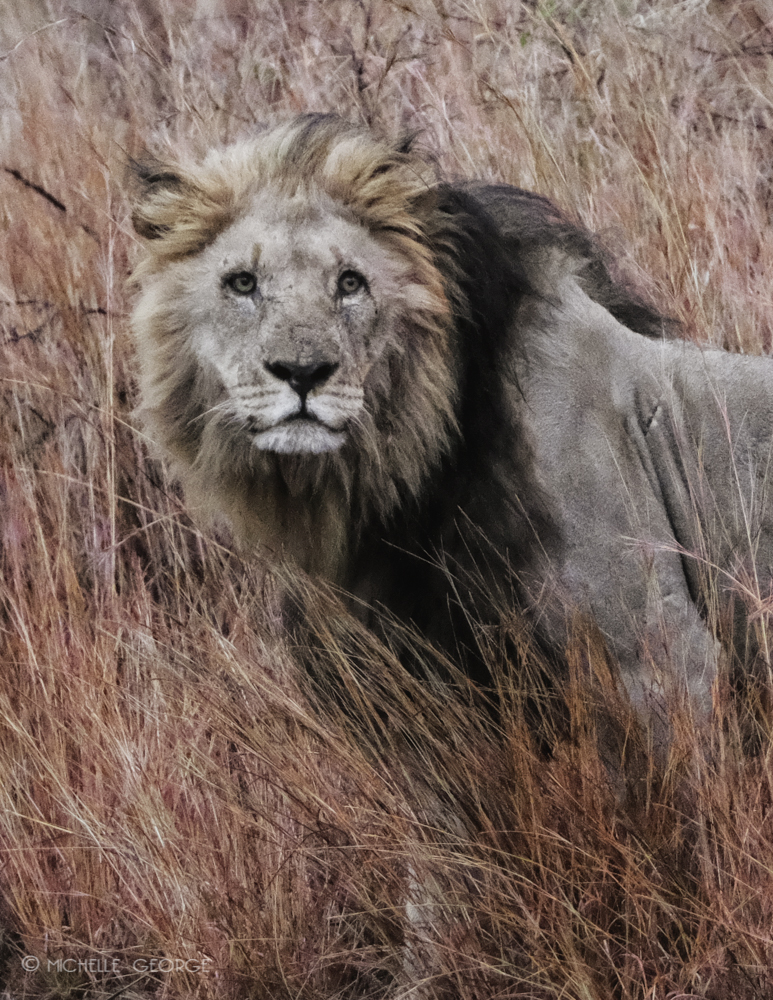
ISO 6400 132mm ƒ/5.6 1/180 Cropped, a little bit of hand shake.

ISO 4000 280 mm ƒ/5.6 1/18 sec The ever elusive and moody South African Buffalo

ISO 6400 100 mm ƒ/5.6 1/17sec Cloud cover makes for interesting sunsets

ISO 640 280 mm ƒ/5.6 1/170 sec Even the overcast sky couldn’t dampen this lilac-breasted roller’s exquisite colour
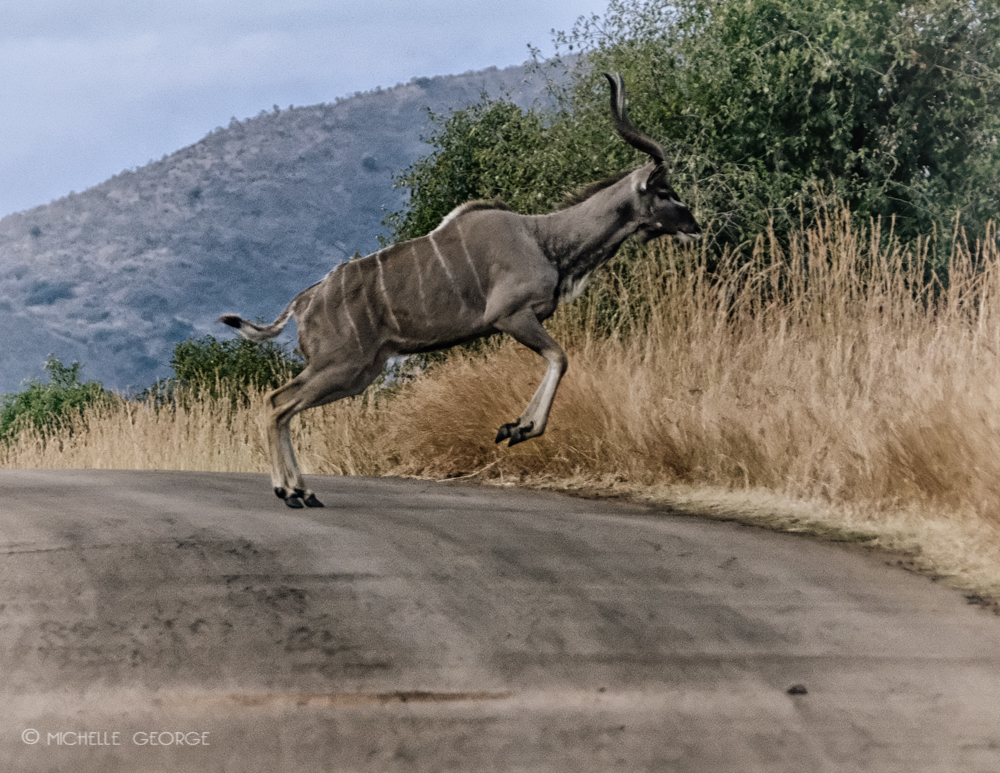
ISO 3200 148.8 mm ƒ5.6 1/650 Sec Still managing to capture movement handheld though I think the auto focus has focused on the foliage behind
I managed to get some shots on one clear day, which was perfect for capturing the patterns of the Zebra and Giraffe:

ISO 400 117.4mm ƒ/5.6 1/1900sec

ISO 400 280mm ƒ/5.6 1/2400sec A bit of camera shake
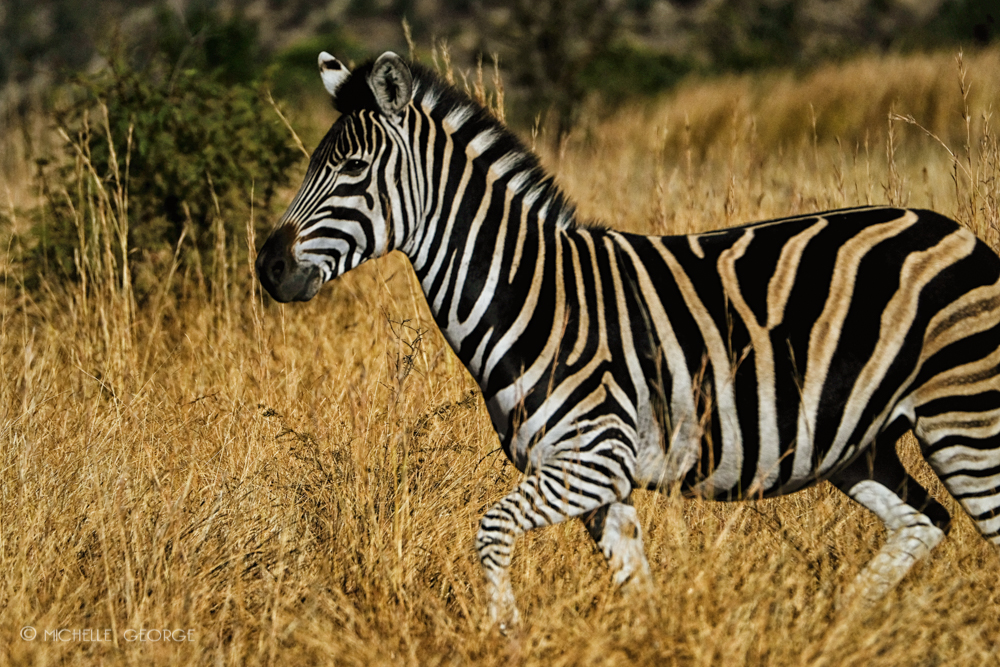
ISO 400 280mm ƒ/5.6 1/2400sec

ISO 1250 280mm ƒ/7.1 1/2700sec

ISO 1250 280mm ƒ/5.6 1/2500sec

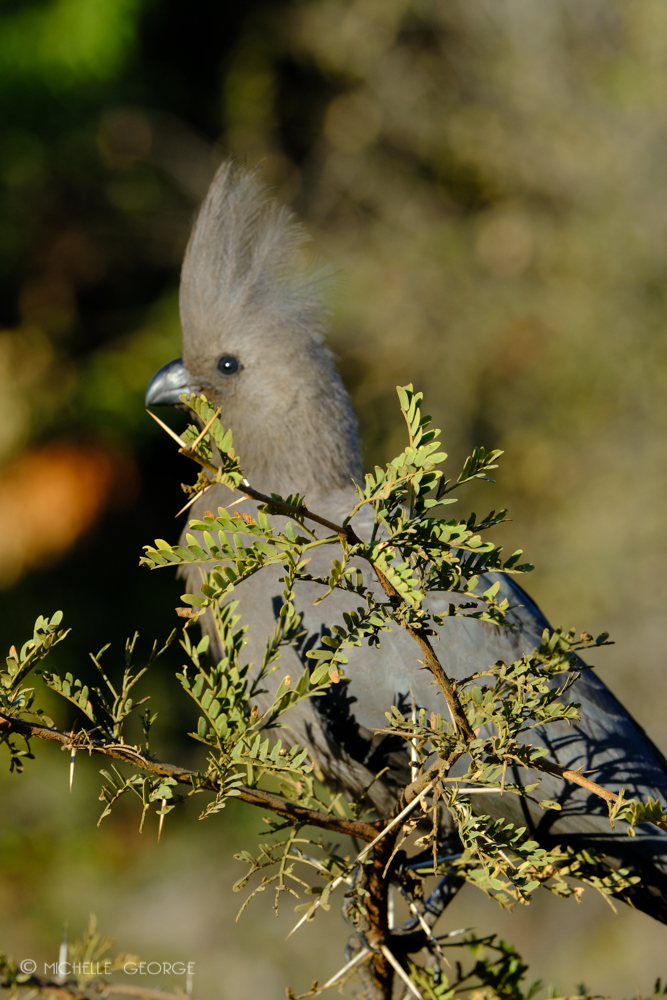
ISO 800 280mm ƒ/11 1/320sec Even a dull coloured bird can make the shot on a clear day though, as with the previous Kudu image, the AF here was determined to settle on the foliage in front.
Lens Choice and Performance
Instead of investing in Fuji’s super telephoto lens, the Fujinon XF100 -400mm ƒ4.5-5.6, I figured the Fujinon Teleconverter XF2X TC WR would be my most economical bet as when combined with my portrait lens the Fujion Lens XF 50 -140mm ƒ2.8 R , the full frame equivalent would give me a reach of up to 427mm. I was hoping this would be enough.
Now I cannot fault these two as a combo, the image quality and sharpness is very impressive. However on my last day I was kicking myself for not taking the plunge and investing in Fuji’s 100 -400 mm, especially after spying a pride of Lions around 300 meters off the road. Trying to get any decent shots of the lion cubs playing whilst their mum looked on was virtually impossible:

ISO 6400 280mm ƒ/5.6 1/50sec Uncropped
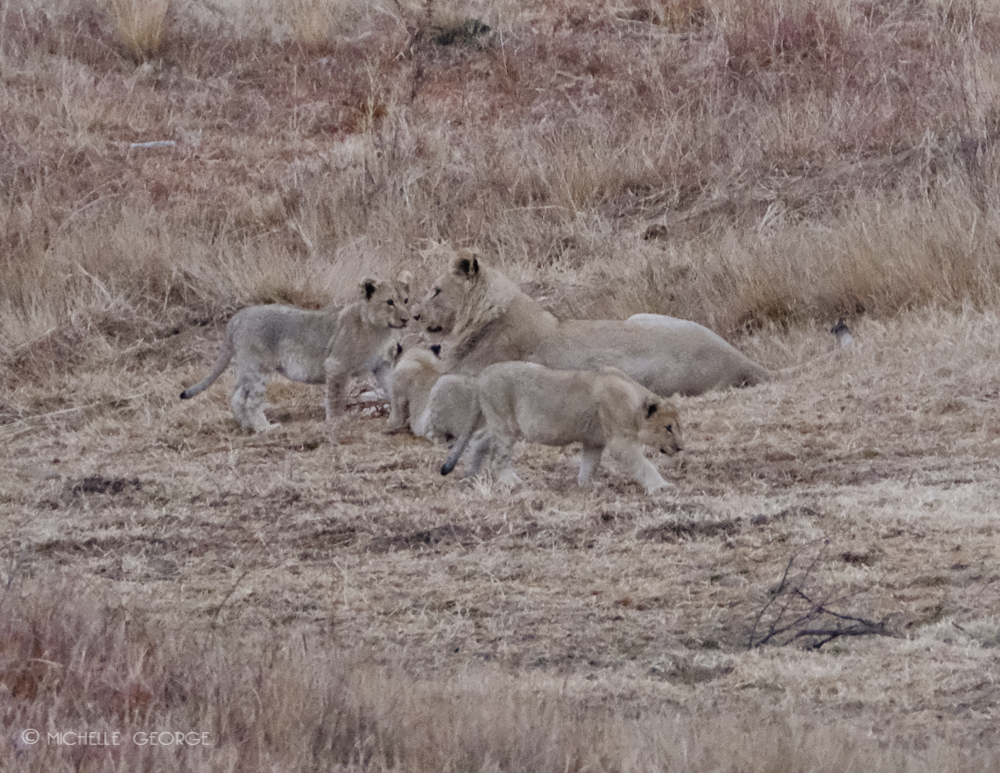
ISO 6400 280mm ƒ/5.6 1/50sec Cropped
However when the wildlife was relatively close the lens combo surpassed itself in sharpness and image quality. Subject separation is also good for a tele converter.

ISO 800 280mm ƒ/71.1 1/2500 sec

ISO 1000 100mm ƒ/11 1/105 sec
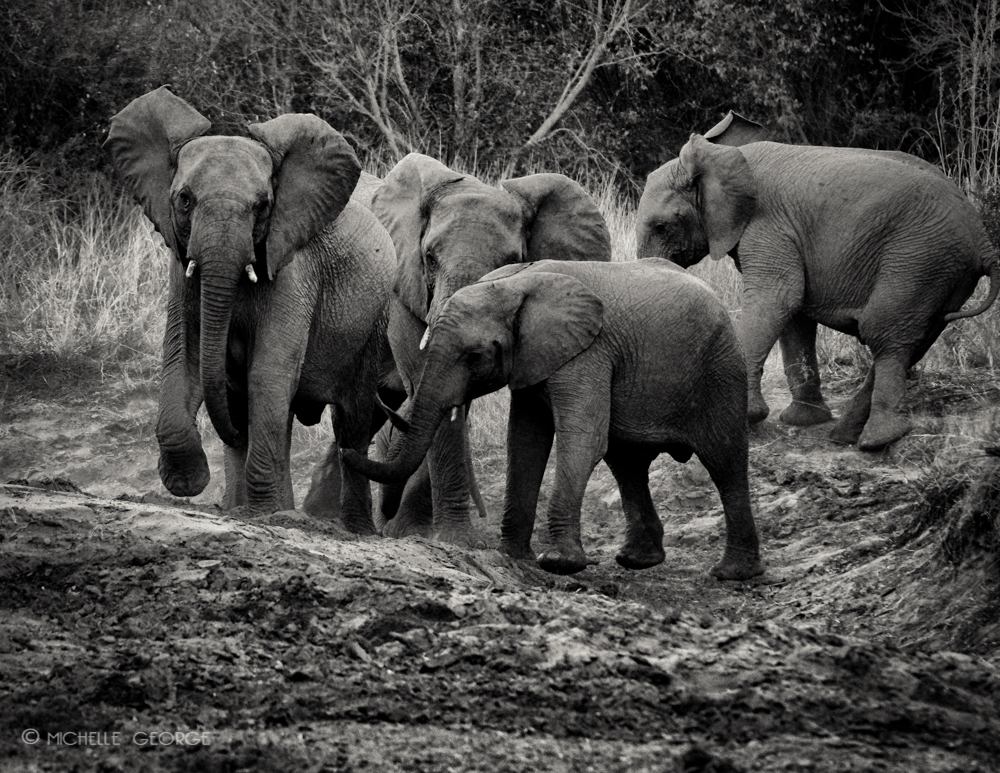
ISO 2500 280mm ƒ/5.6 1/280 sec
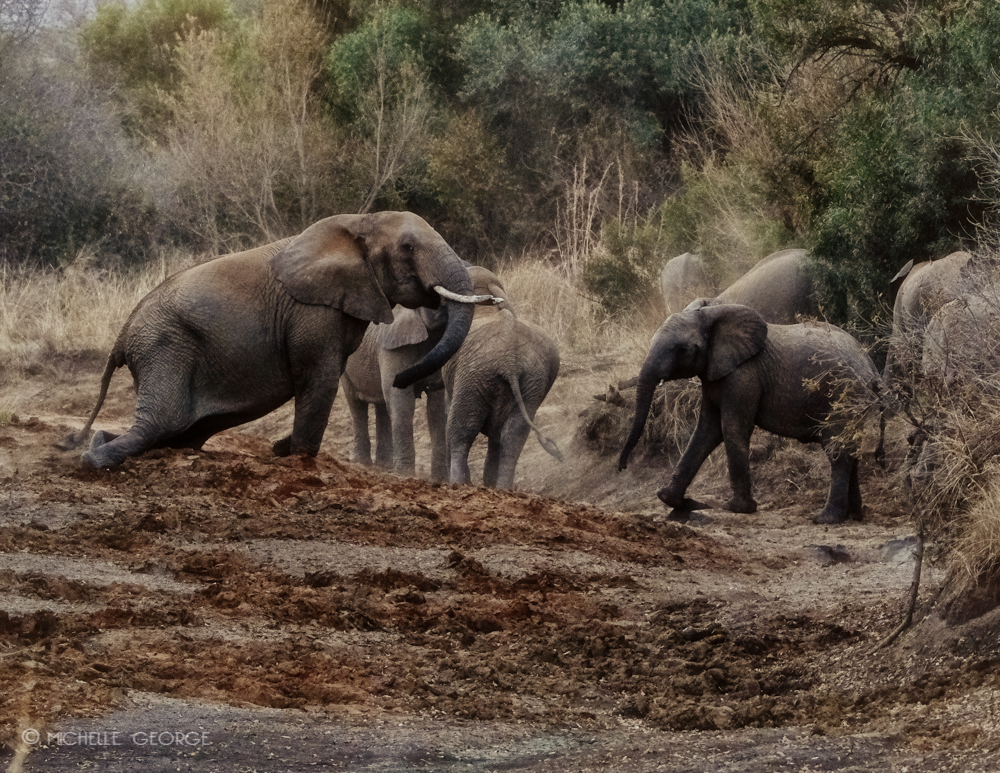
ISO 2500 100mm ƒ/5.6 1/320 sec

ISO 2500 100mm ƒ/5.6 1/90 sec

ISO 1600 280mm ƒ/6.4 1/70 sec

ISO 2000 132mm ƒ/7.1 1/150sec

ISO 3200 100mm ƒ/6.4 1/1000 sec The Elephant was so close here, right next to the jeep. I was able to get such a detail shot at a mere 200mm focal length

ISO 2000 100mm ƒ/71.1 1/300 sec

ISO 2000 100 mm ƒ/7.1 1/300 sec

ISO 640 124 mm ƒ/5.6 1/160 sec Close up of a Zebra
All Time Favourite Moment
With only 7,100 Cheetah’s left in the wild and only 10% of Cheetah cubs living beyond their first year, I have to say my favourite experiences on Safari was witnessing two of these beautiful creature, who had just killed a male impala ward off a pack of jackals trying their luck:

ISO 250 280mm ƒ8 1/480
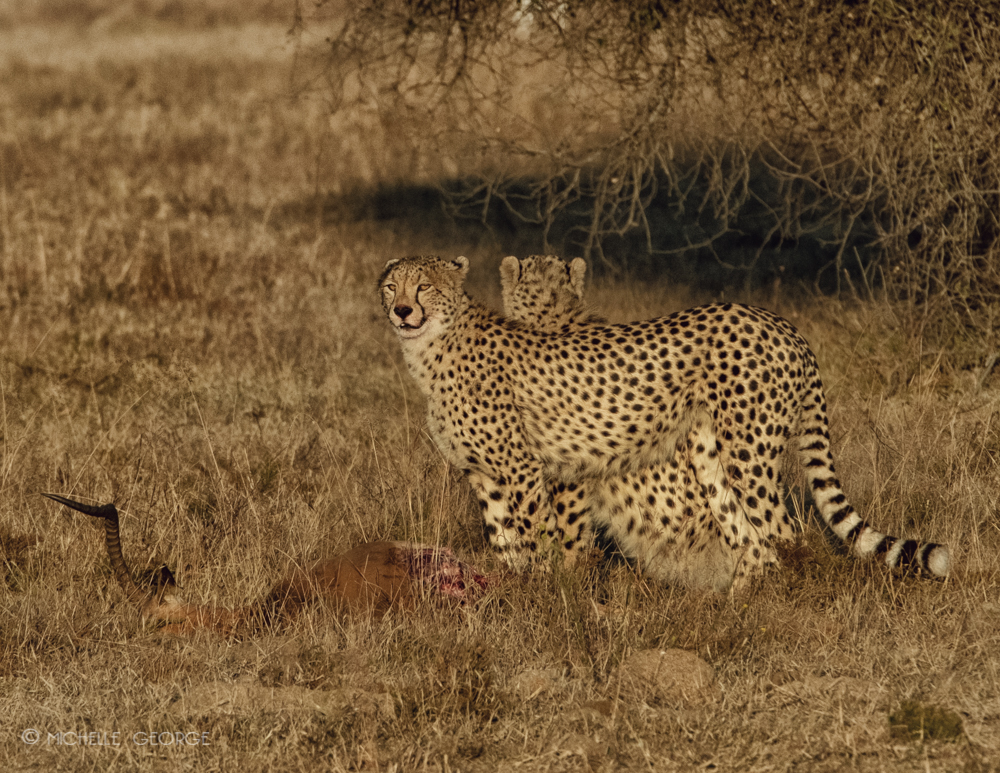
ISO 500 280mm ƒ8 1/750

ISO 500 280mm ƒ8 1/750

ISO 1600 280mm ƒ7.1 1/1000 Here it looks as if I’ve spotted a two headed Cheetah
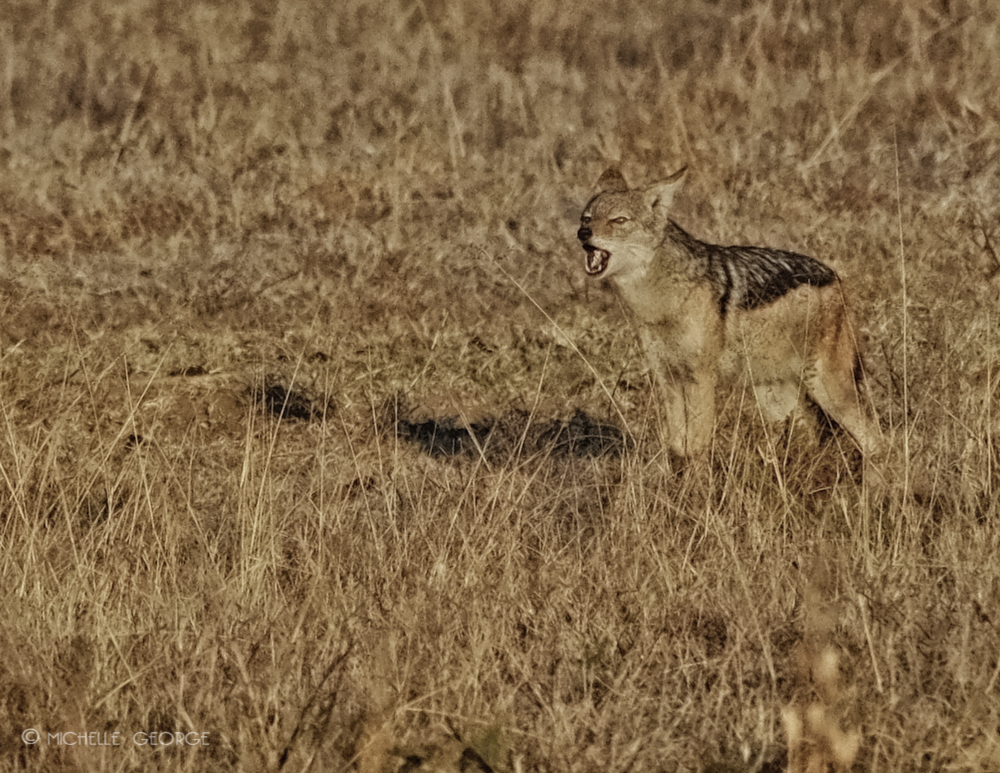
ISO 1600 280mm ƒ8 1/11000 Cropped
Nature is harsh and there always been a moral ambiguity concerning wildlife, this is something that has always fascinated me from a philosophical perspective. And seeing this in all it’s harsh reality was an extremely visceral experience.
I also took some short Video footage here, though forgive me for my unsteady hand work, video is not my forte.
[youtube https://www.youtube.com/watch?v=2LWyv5qaRbo&w=560&h=315]
Foibles
Due to Fuji’s excellent jpeg quality I shot predominately in this format using the Velvia film stimulation. One thing I did notice was the blue hue that seemed to be cast on a lot of the images See the example of the whites of the Zebra below and the water hole at dusk.

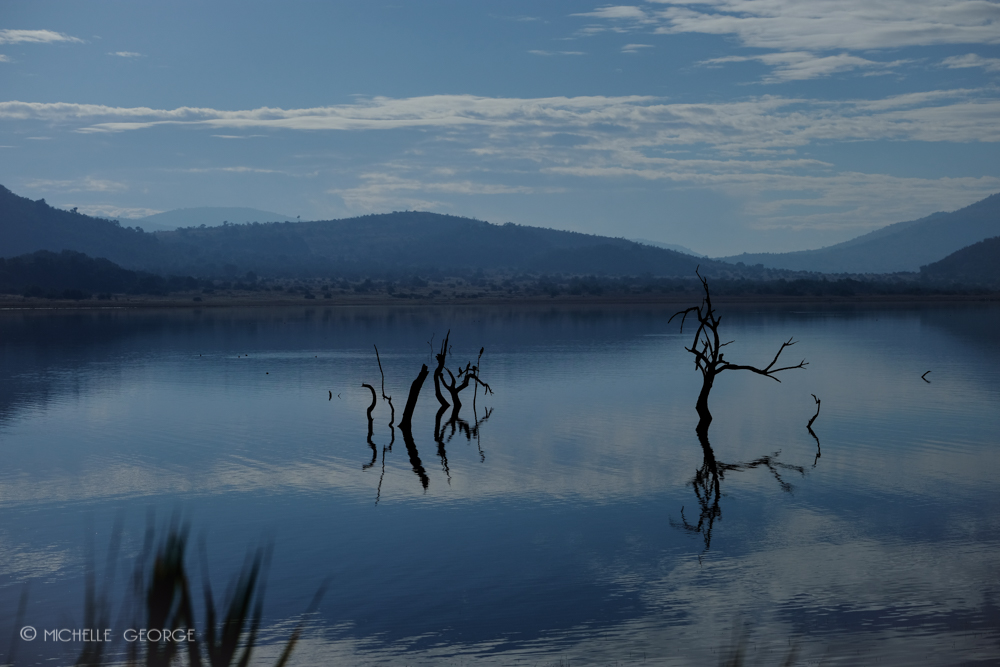
IS) 200 50mm ƒ/4.5 1/2900 The one time I removed the tele converter

ISO 104mm ƒ/10 1/550 secs
I’m not sure if this was down to Chromatic aberration, the polarised filter, or Fuji’s Velvia film stimulation?! nevertheless a few tweaks in lightroom seemed to do the trick.
I particularly loved shooting in CH (High Speed burst) mode with 11 fps and the new improved shutter button was extremely responsive. Auto Focus was also extremely fast but not always accurate, as seem on the earlier image of the bird and Kudu.
The Real Test
Visiting the Hippos, down in a valley, with very low light, was when I really put the Fuji X-H1 to the test. As I wanted to get movement a fast shutter speed was essential, but in using the tele converter I effectively lost 2 stops of light; I was shooting at ƒ5.6 instead of ƒ2.8, consequently, I was solely reliant on the XH-1 ISO. The Result can be seen below:
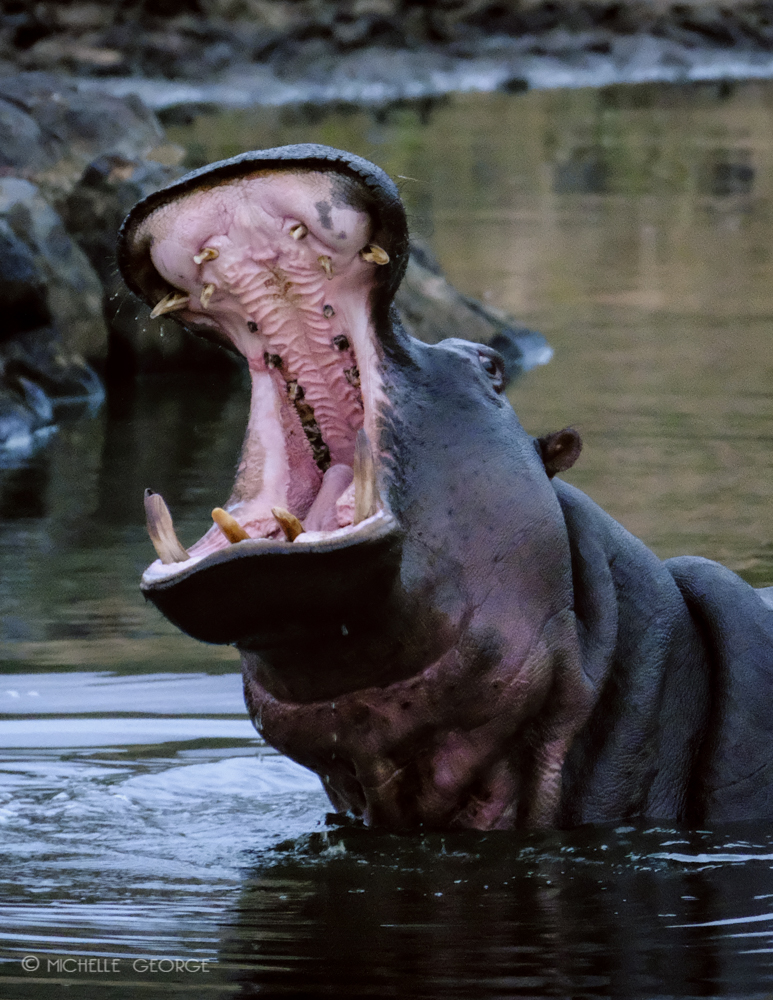
ISO 12800 280mm ƒ/5.6 1/200 sec

ISO 12800 280mm ƒ/5.6 1/200 sec
I’m really pleased that I managed to get these shots hand held, a big win for the IBIS (It works) and the ISO at 12800 is pretty impressive. Despite there being some loss of detail and camera shake is still apparent I think the Fuji X-H1 did an excellent job considering the conditions.
A Special Mention
Before I end this blog I would like to give a special mention to the Rhino whose plight has truly touched my heart. This magnificent creature could face extinction within the next 10 years unless something is done about the ever increasing poaching industry. A demand in the Asian market for their horns, superstitiously, believed to cure snakebites, hallucinations, typhoid, headaches, carbuncles, vomiting, food poisoning, and “devil possession.” has resulted in the death of over 1,000 Rhino’s in 2017 alone. Please show your support by donating to Save the Rhino they’re truly are a majestic creature. I felt humbled in their presence.

ISO 1600 112.6mm ƒ/5.6 1/240 sec

ISO 1600 137mm ƒ/5.6 1/210 sec
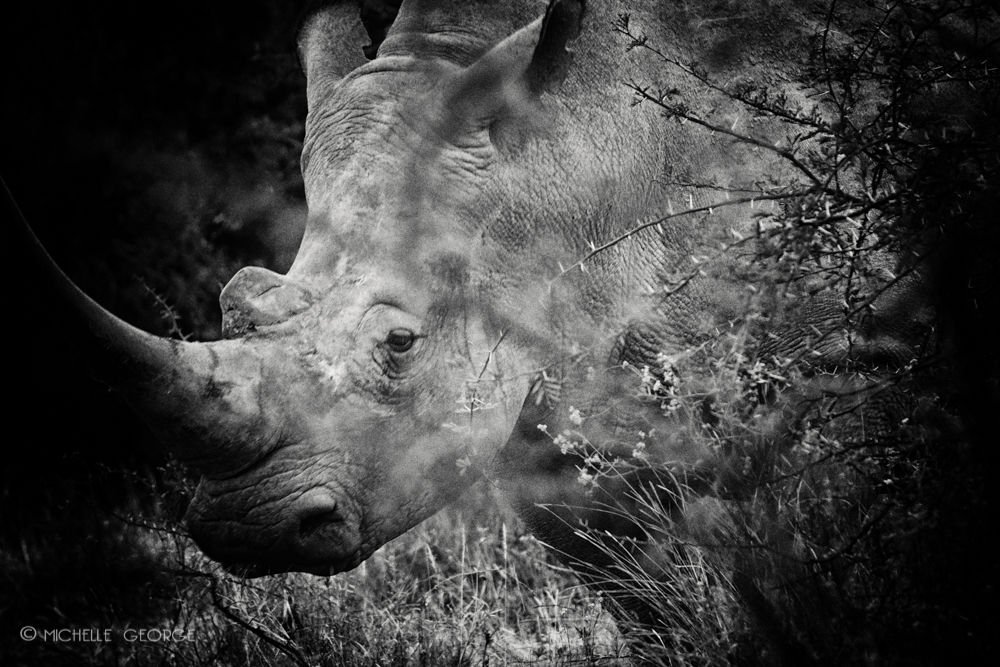
ISO 1000 280mm ƒ/5.6 1/55 sec
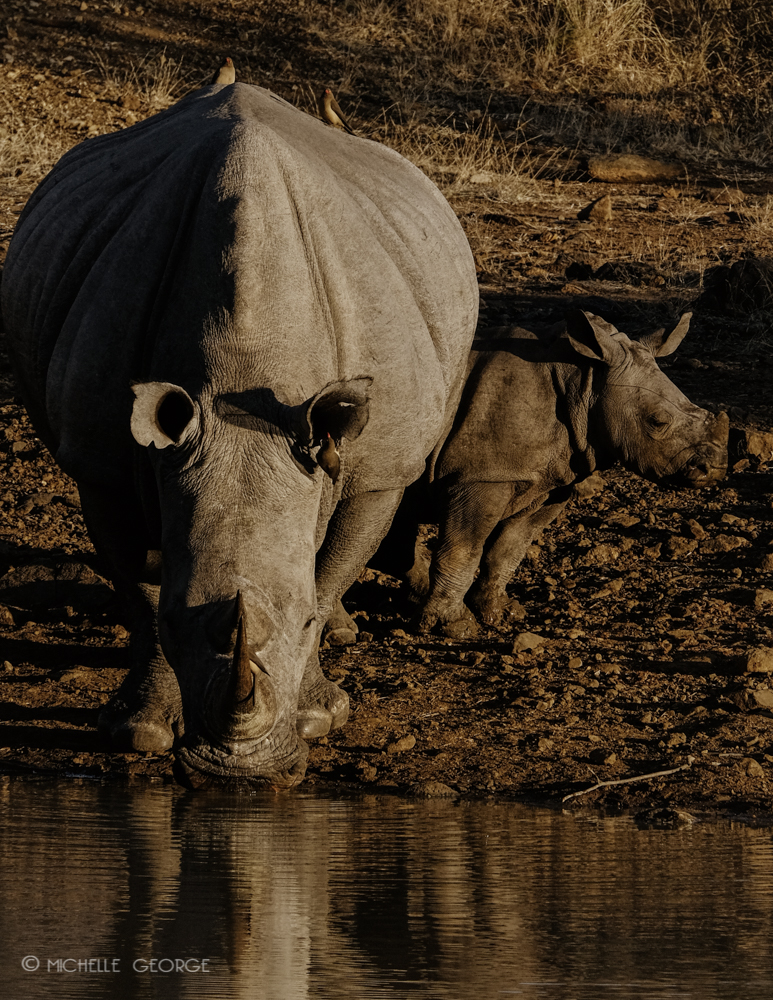
ISO 500 280mm ƒ/11 1/340 sec

ISO 1000 100mm ƒ/11 1/1250 sec
One Last Surprise
There was an intensity in the air on my final nights game drive the sky had an extra dramatic edge and dare I say it violent look about it. I had all but give up hope on spotting the illusive leopard; then suddenly, I peer behind and I see this dramatic silhouette walking towards the jeep…
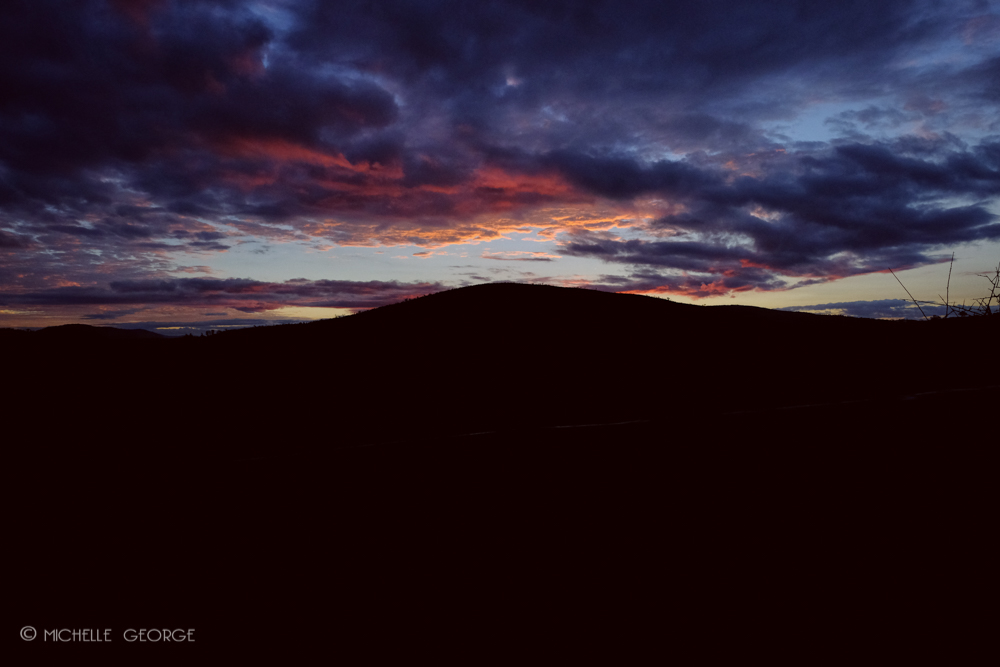
ISO 12800 22.7mm ƒ/9.5 1/350 sec (Fujifilm 16-55mm f2.8 R LM WR )
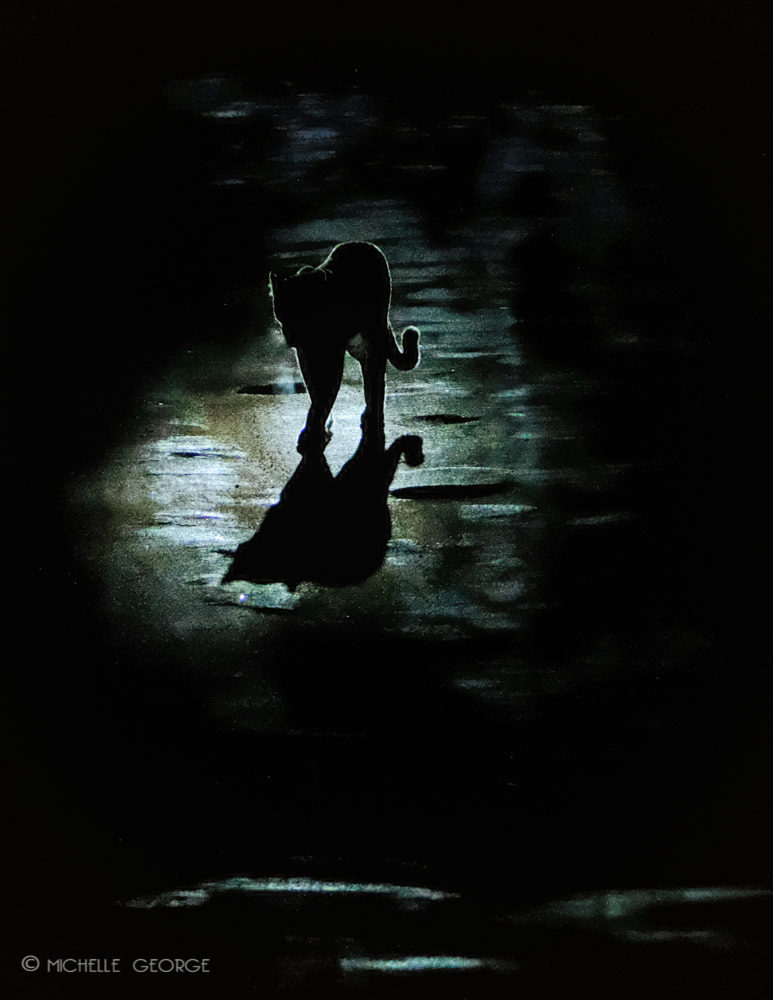
ISO 12800 100mm ƒ/5.6 1/100 sec

ISO 12800 100mm ƒ/5.6 1/40
It was serendipity to spot the leopard in such a climatic way that it looked like something out of a Film Noir movie; my perfect inspiration for photography.
A special thanks to Tshukudu Bush Lodge